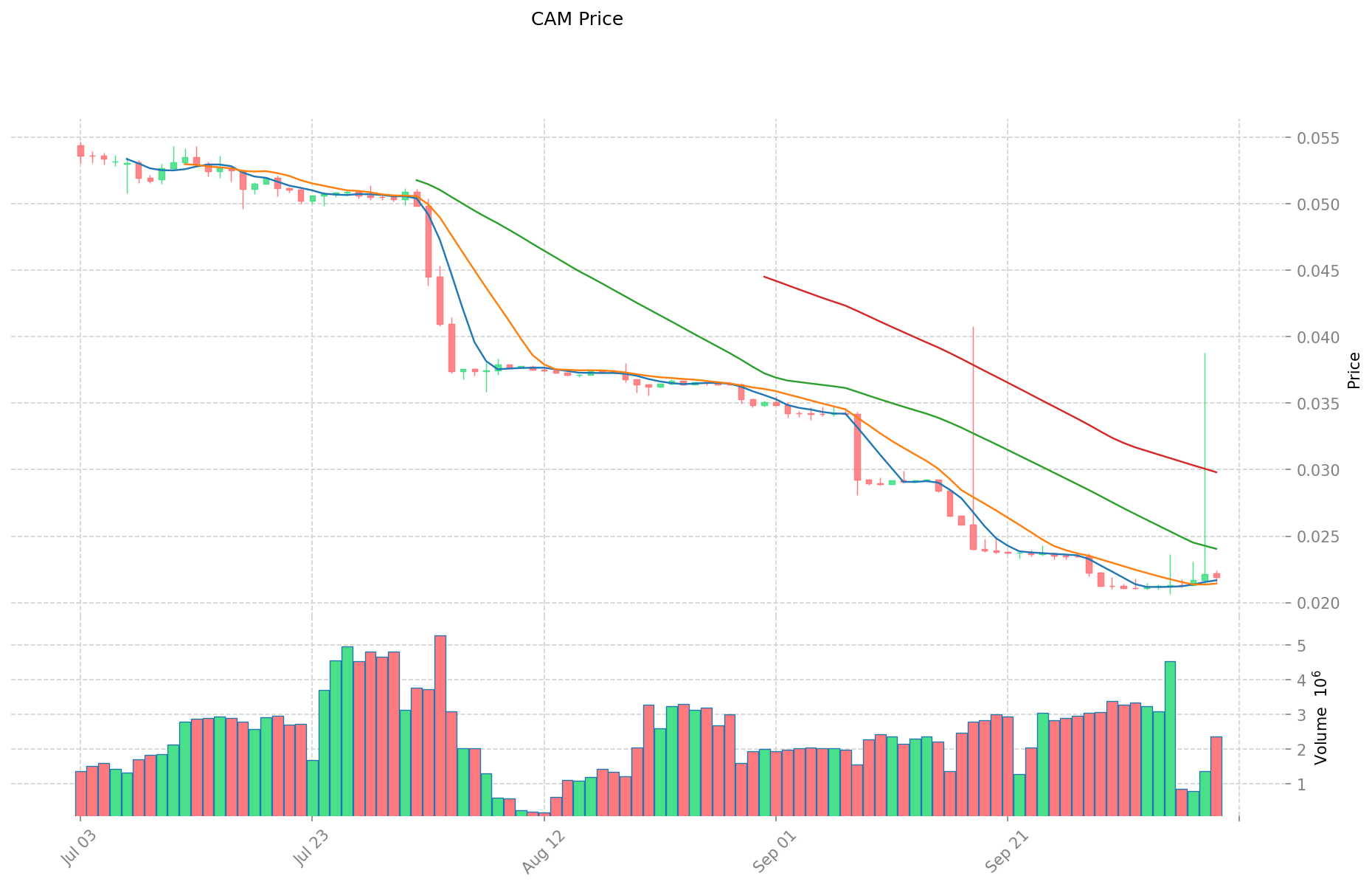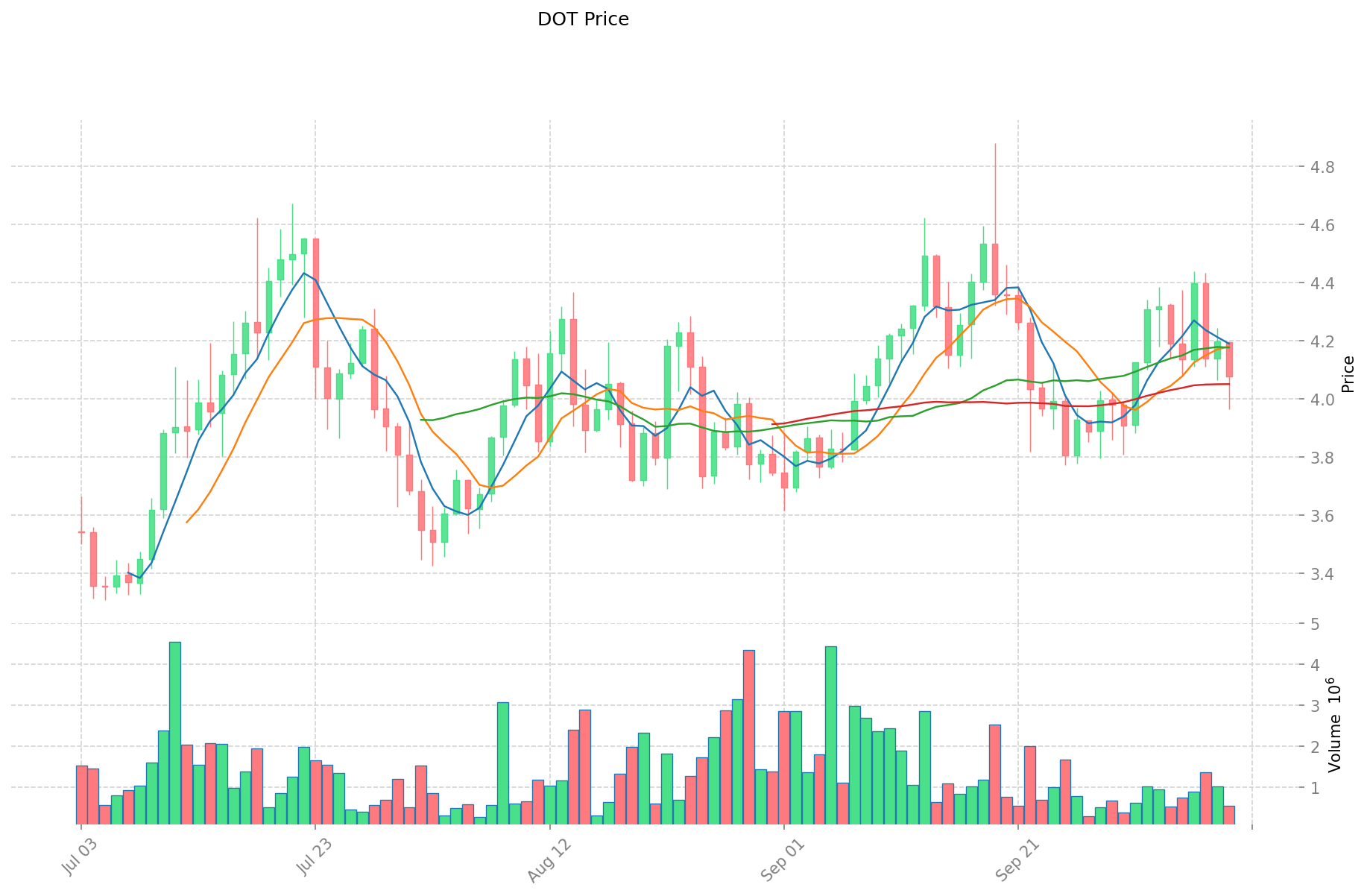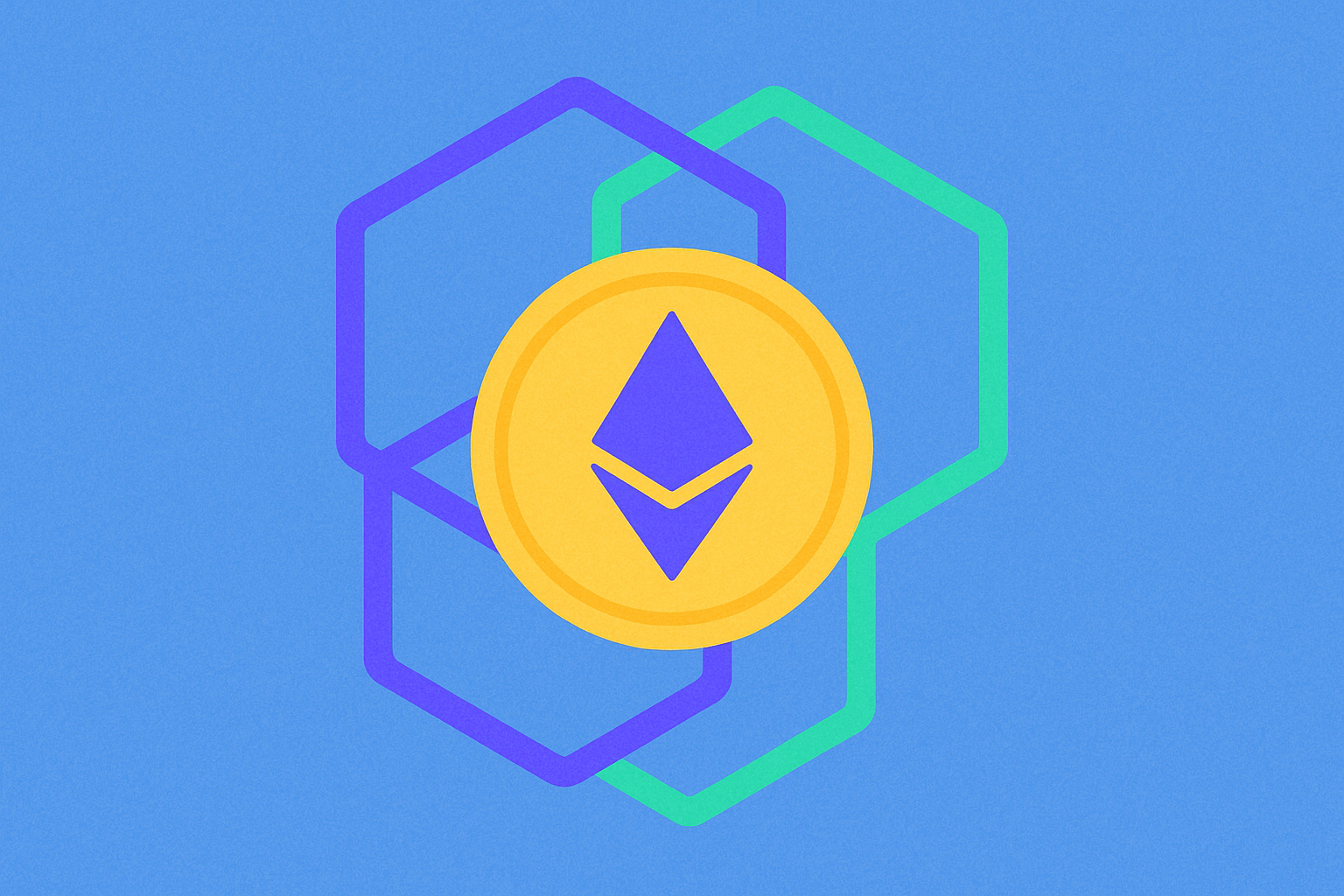CAM ve DOT: Ağ trafik yönetiminde iki farklı yaklaşımın karşılaştırılması

Giriş: CAM ve DOT Yatırımlarının Karşılaştırılması
Kripto para piyasasında Camino Network (CAM) ile Polkadot (DOT) arasındaki karşılaştırma, yatırımcılar için kaçınılmaz bir konu haline gelmiştir. Her iki varlık, piyasa değeri sıralaması, kullanım alanları ve fiyat performansı açısından ciddi farklılıklar gösterirken, kripto varlık konumlandırmasında da birbirinden ayrılır.
Camino Network (CAM): Lansmanından bu yana, 11 trilyon dolarlık seyahat sektörüne odaklanmasıyla piyasanın dikkatini çekti.
Polkadot (DOT): 2020'de piyasaya sürüldüğünden beri blokzincirler arası birlikte çalışabilirlikte öncü olarak tanındı ve küresel işlem hacmi ile piyasa değeri bakımından yüksek seviyelerde yer aldı.
Bu makalede, CAM ile DOT’un yatırım değerleri; geçmiş fiyat hareketleri, arz mekanizmaları, kurumsal benimseme, teknolojik ekosistemler ve gelecek beklentileri üzerinden kapsamlı biçimde analiz edilecek ve yatırımcıların en çok merak ettiği şu soruya yanıt aranacaktır:
"Şu anda hangisi daha avantajlı bir yatırım?"
I. Fiyat Geçmişi Karşılaştırması ve Güncel Piyasa Durumu
CAM ve DOT Tarihsel Fiyat Hareketleri
- 2025: CAM, 29 Ocak'ta $0,19806 ile zirve yaptıktan sonra 5 Ekim'de $0,02062 seviyesine gerileyerek ciddi bir değer kaybı yaşadı.
- 2021: DOT, 4 Kasım'da $54,98 ile en yüksek seviyesine ulaşarak güçlü bir performans sergiledi.
- Kıyaslama: Son piyasa döngüsünde CAM, zirvesinden %88’in üzerinde düşerken DOT, daha istikrarlı bir seyir izleyip şu anda zirvesinin yaklaşık %92 altında işlem görüyor.
Güncel Piyasa Durumu (10 Ekim 2025)
- CAM güncel fiyatı: $0,0219
- DOT güncel fiyatı: $4,077
- 24 saatlik işlem hacmi: CAM $53.546,34 / DOT $2.159.385,50
- Piyasa Duyarlılık Endeksi (Korku & Açgözlülük Endeksi): 64 (Açgözlülük)
Gerçek zamanlı fiyatları görüntülemek için tıklayın:
- CAM güncel fiyatı için Piyasa Fiyatı
- DOT güncel fiyatı için Piyasa Fiyatı


II. CAM ve DOT Yatırım Değerini Etkileyen Temel Faktörler
Arz Mekanizmaları Karşılaştırması (Tokenomik)
- CAM: Maksimum arzı 4.210.000.000 CAM ile sınırlandırılmıştır.
- DOT: Yıllık %10 – %10 arasında değişen oranla yönetim tarafından belirlenen enflasyonist bir modele sahiptir.
- 📌 Tarihsel perspektif: CAM gibi sabit arz modelleri, zamanla kıtlık yoluyla değer artışı sağlayabilirken, DOT’un enflasyonu, değerin korunması için güçlü ağ büyümesini gerektirir.
Kurumsal Benimsenme ve Piyasa Kullanımları
- Kurumsal varlıklar: DOT, önde gelen fonlar ve borsalar tarafından desteklenerek daha yaygın kurumsal benimsenmeye sahiptir.
- Kurumsal entegrasyon: DOT, Polkadot ekosistemi ile büyük şirketlerle iş birlikleri geliştirirken, CAM ise Camino Network üzerinden kurumsal ilişkilerini inşa etmektedir.
- Ulusal düzenlemeler: Her iki proje farklı yasal düzenlemelerle karşılaşmakta, düzenleyici netlik ise her iki ağ için de zamanla oluşmaktadır.
Teknik Gelişim ve Ekosistem Oluşumu
- CAM teknik güncellemesi: Ana ağını kısa süre önce başlatarak izinli doğrulayıcılarla gerçek varlık tokenizasyonuna ve regülasyon uyumluluğuna odaklanıyor.
- DOT teknik gelişimi: Parachain ekosistemiyle zincirler arası birlikte çalışabilirliği temel özellik olarak sunuyor ve paylaşımlı güvenlik modelini geliştiriyor.
- Ekosistem karşılaştırması: DOT, aktif parachain’lerle daha olgun bir DeFi ekosistemine sahipken, CAM regülasyon uyumlu dijital varlıklar ve tokenizasyon odaklı özel altyapı geliştiriyor.
Makroekonomik ve Piyasa Döngüleri
- Enflasyonist ortamlarda performans: CAM’in sabit arz modeli, DOT’un enflasyonist modeline göre enflasyona karşı daha iyi koruma potansiyeline sahip olabilir.
- Makro para politikaları: Faiz artışları her iki varlığı da olumsuz etkiler; sabit arzlı varlıklar uzun vadede daha dirençli olabilir.
- Jeopolitik etkenler: Her iki ağ da sınır ötesi işlem imkânı sunarken, CAM’in uyumluluk odaklı yaklaşımı belirsiz regülasyon ortamlarında avantaj sağlayabilir.
III. 2025-2030 Fiyat Tahmini: CAM vs DOT
Kısa Vadeli Tahmin (2025)
- CAM: Muhafazakâr $0,0181687 - $0,02189 | İyimser $0,02189 - $0,0293326
- DOT: Muhafazakâr $2,53332 - $4,086 | İyimser $4,086 - $6,00642
Orta Vadeli Tahmin (2027)
- CAM büyüme fazına geçebilir, tahmini fiyat aralığı $0,0163400094 - $0,0304262244
- DOT boğa piyasasına girebilir, tahmini fiyat aralığı $4,004167635 - $7,66014678
- Temel etkenler: Kurumsal sermaye girişi, ETF, ekosistem gelişimi
Uzun Vadeli Tahmin (2030)
- CAM: Temel senaryo $0,03857842412424 - $0,042822050777906 | İyimser senaryo $0,042822050777906+
- DOT: Temel senaryo $9,36708282081 - $13,4885992619664 | İyimser senaryo $13,4885992619664+
Feragatname
CAM:
| Yıl | Tahmini En Yüksek Fiyat | Tahmini Ortalama Fiyat | Tahmini En Düşük Fiyat | Değişim Oranı (%) |
|---|---|---|---|---|
| 2025 | 0,0293326 | 0,02189 | 0,0181687 | 0 |
| 2026 | 0,03073356 | 0,0256113 | 0,024330735 | 16 |
| 2027 | 0,0304262244 | 0,02817243 | 0,0163400094 | 28 |
| 2028 | 0,038382118632 | 0,0292993272 | 0,019337555952 | 33 |
| 2029 | 0,04331612533248 | 0,033840722916 | 0,0287646144786 | 54 |
| 2030 | 0,042822050777906 | 0,03857842412424 | 0,023918622957028 | 76 |
DOT:
| Yıl | Tahmini En Yüksek Fiyat | Tahmini Ortalama Fiyat | Tahmini En Düşük Fiyat | Değişim Oranı (%) |
|---|---|---|---|---|
| 2025 | 6,00642 | 4,086 | 2,53332 | 0 |
| 2026 | 6,560073 | 5,04621 | 3,4314228 | 23 |
| 2027 | 7,66014678 | 5,8031415 | 4,004167635 | 42 |
| 2028 | 8,751137382 | 6,73164414 | 4,5102015738 | 64 |
| 2029 | 10,99277488062 | 7,741390761 | 4,72224836421 | 89 |
| 2030 | 13,4885992619664 | 9,36708282081 | 8,2430328823128 | 129 |
IV. Yatırım Stratejisi Karşılaştırması: CAM vs DOT
Uzun Vadeli ve Kısa Vadeli Yatırım Stratejileri
- CAM: Gerçek varlıkların tokenizasyonu ve regülasyon uyumluluğuna odaklanan yatırımcılar için uygun
- DOT: Ekosistem çeşitliliği ve birlikte çalışabilirlik potansiyeli arayan yatırımcılar için ideal
Risk Yönetimi ve Varlık Dağılımı
- Muhafazakâr yatırımcılar: CAM %30 / DOT %70
- Agresif yatırımcılar: CAM %50 / DOT %50
- Koruma araçları: Stablecoin dağılımı, opsiyonlar, çapraz para portföyleri
V. Potansiyel Risk Karşılaştırması
Piyasa Riskleri
- CAM: Daha düşük piyasa değeri ve işlem hacmi nedeniyle yüksek volatilite
- DOT: Kripto piyasasının genel eğilimleri ve parachain ekosistem performansına bağlı riskler
Teknik Riskler
- CAM: Ölçeklenebilirlik ve erken aşamada ağ istikrarı
- DOT: Parachain ihale süreçleri ve zincirler arası güvenlik riskleri
Düzenleyici Riskler
- Küresel regülasyon politikaları her iki projeyi farklı şekilde etkileyebilir; CAM’in uyumluluk odağı avantaj sunabilir
VI. Sonuç: Hangisi Daha İyi Alım?
📌 Yatırım Değeri Özeti:
- CAM avantajları: Sabit arz, regülasyon odaklı gerçek varlık tokenizasyonu
- DOT avantajları: Kurulu ekosistem, birlikte çalışabilirlik, kurumsal benimsenme
✅ Yatırım Tavsiyesi:
- Yeni yatırımcılar: DOT’un güçlü piyasa varlığına ağırlık vererek dengeli bir portföy oluşturun
- Tecrübeli yatırımcılar: CAM’in büyüme potansiyelini değerlendirin, DOT’u ekosistem maruziyeti için koruyun
- Kurumsal yatırımcılar: CAM’i regülasyon odaklı fırsatlar için analiz edin, DOT tahsisatını ekosistem çeşitliliği için sürdürün
⚠️ Risk Uyarısı: Kripto para piyasaları oldukça volatil olabilir. Bu içerik yatırım tavsiyesi değildir. None
SSS
S1: CAM ve DOT arasındaki temel farklılıklar nelerdir? C: CAM’in maksimum arzı 4.210.000.000 token ile sınırlı olup seyahat sektörüne ve gerçek varlık tokenizasyonuna odaklanır. DOT ise enflasyonist bir arz modeline sahip ve blokzincirler arası birlikte çalışabilirlik ile daha gelişmiş bir ekosistem sunar.
S2: Son dönemde hangi kripto para daha iyi fiyat performansı gösterdi? C: DOT, zirvesinin yaklaşık %92 altında işlem görerek daha istikrarlı seyrederken, CAM zirvesinden %88’in üzerinde daha hızlı değer kaybı yaşadı.
S3: CAM ve DOT’un piyasa değeri ve işlem hacmi nasıl karşılaştırılır? C: DOT, CAM’e kıyasla çok daha yüksek piyasa değerine ve işlem hacmine sahip. Güncel olarak DOT’un 24 saatlik işlem hacmi $2.159.385,50, CAM’in ise $53.546,34.
S4: Projelerin öne çıkan teknolojik özellikleri nelerdir? C: CAM, izinli doğrulayıcılarla regülasyon uyumu ve gerçek varlık tokenizasyonuna odaklanırken; DOT, zincirler arası birlikte çalışabilirlik ve paylaşımlı güvenlik modeliyle gelişmiş bir parachain ekosistemi oluşturmuştur.
S5: Analistler CAM ve DOT’un gelecekteki fiyatını nasıl tahmin ediyor? C: 2030 yılı için CAM’in temel fiyat aralığı $0,03857842412424 - $0,042822050777906, DOT’un ise $9,36708282081 - $13,4885992619664 olarak tahmin ediliyor.
S6: CAM ve DOT yatırımlarında başlıca riskler nelerdir? C: CAM, düşük piyasa değeri ve işlem hacmi nedeniyle yüksek volatilite ve ölçeklenebilirlik riskleri taşır; DOT ise genel kripto piyasa eğilimlerine ve parachain ekosistemine bağlı güvenlik risklerine maruz kalır.
S7: Kurumsal yatırımcılar CAM ve DOT’a nasıl yaklaşmalı? C: Kurumsal yatırımcılar, gerçek varlık tokenizasyonunda uyumluluk odaklı fırsatlar için CAM’i değerlendirebilir, DOT tahsisatıyla çeşitli blokzincir ekosistemine ve birlikte çalışabilirlik çözümlerine maruz kalabilir.

Avalanche (AVAX) üzerindeki RWA: Gerçek Dünya Varlıkları Nasıl Zincire Geçer

Ondo Finance (ONDO) iyi bir yatırım mı?: Bu yenilikçi DeFi protokolünün potansiyelini ve risklerini değerlendiriyoruz

2025 QNT Fiyat Tahmini: Quant Network'ün Tokeni İçin Potansiyel Büyüme ve Piyasa Trendlerinin Analizi

ELYSIA (EL) İyi Bir Yatırım mı?: 2024 Yılında Bu Yükselen Kripto Paranın Potansiyeli ve Riskleri Üzerine Analiz

XDC Network (XDC) yatırım için uygun mu?: Kurumsal odaklı bu blockchain platformunun potansiyeli üzerine analiz

OCT ve AVAX: Akıllı sözleşme geliştirme alanında öne çıkan iki blockchain platformunu karşılaştırıyoruz

Dijital Sanat Oluşturma: NFT Üretiminde Öne Çıkan Yapay Zekâ Araçları

Kripto Parada Proof of Reserve'ın Anlaşılması

Ethereum Katman 2 Çözümlerini Keşfetmek: Optimism'e Odaklanma

Ethereum İşlem Maliyetlerini Azaltmaya Yönelik Etkin Stratejiler

NFT Nadirliğinde Uzmanlaşma: Puanlama ve Değerleme İçin Kapsamlı Rehber





